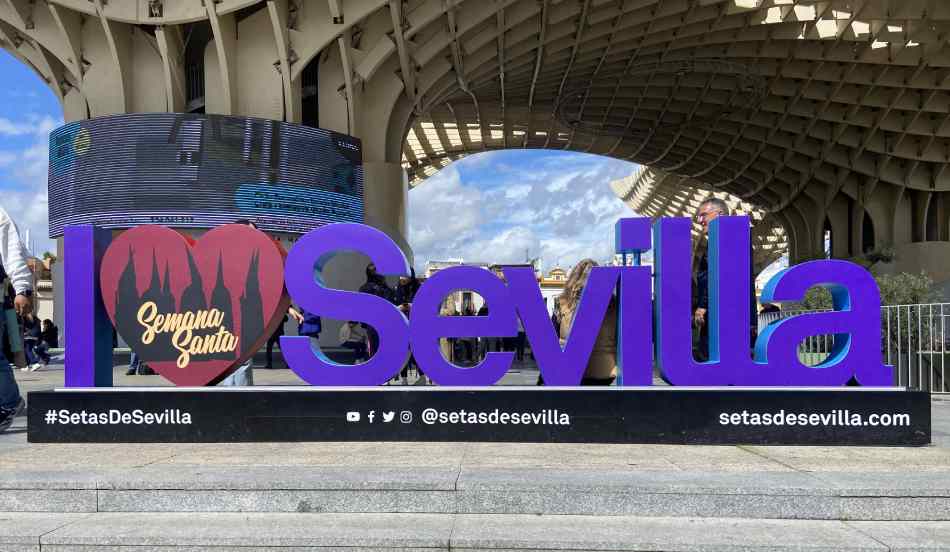Seville is where southern Spanish culture radiates its utmost brilliance, mirrored in its architecture, culinary art, and array of cultural activities. Discover Seville’s finest new tapas eateries, welcoming rooftop lounges, and numerous genuine flamenco venues.
Nestled along the Guadalquivir River, the Andalusian capital of Seville showcases its charm with low-rise, whitewashed buildings. It stands out as uniquely Spanish among Spain’s major cities. It’s the birthplace and heart of quintessentially Spanish traditions like flamenco, tapas, and bullfighting, all deeply woven into the fabric of Sevillian life.
Meandering through Seville’s historic heart, one discovers a wealth of cultural treasures. Losing oneself in its labyrinthine lanes offers unexpected delights. Traces of history linger beneath the terracotta tiles, amidst the soaring church towers and lush palm canopies, spanning from Roman legacies to more recent times. The city’s Moorish history is vividly alive in its remarkable architecture and the intricate azulejo tilework that embellishes numerous bars. Spacious boulevards, majestic parks, and grandiose palaces punctuate the dense urban fabric. The compact downtown ensures that the plethora of landmarks are just a short stroll away, with the added luxury of never being far from a welcoming bar or café.
For ages, Seville’s culture has been sculpted by the relentless sun. It boasts the warmest temperatures of any large city in the Iberian peninsula, making evenings and nights particularly cherished. Seville truly shines in the soft glow of dusk, as the outdoor cafes come alive under the sweet-scented orange trees, encapsulating the city’s essence.
Seville’s Sanctity of Siesta: A Time-Honored Tradition
During the day, locals anticipate the evening. Newcomers to Seville often find themselves bewildered around 2 p.m., as the streets suddenly empty and shop shutters are drawn. “Have we overlooked a holiday?” they wonder. But no, in Seville, the cherished siesta is earnestly upheld, despite how out of step this tradition may seem with our fast-paced modern era. By five or six o’clock, the city magically comes to life again.
Seville’s nightlife starts late and often has a family-friendly vibe. You might find yourself at a popular rooftop bar at 10:30 p.m., questioning whether it’s closing time due to the absence of patrons. Yet, it’s no surprise to see the terrace bustling with people—teens, children, parents, and even new mothers with strollers—just an hour later. The grandparents, who’ve slept the longest and dined the latest, arrive last, around 11:30 p.m. Now, the terrace buzzes with energy; it’s Saturday night in Seville, and the festivities are about to begin.
While Seville tenderly preserves its traditions, the city has seen significant changes in recent years. As it becomes an increasingly popular destination, traditional restaurants, tapas bars, and shops are being joined by a wave of stylish and modern counterparts.
Experiencing Flamenco: From Clubs to Museums
Skipping a flamenco club while in Seville would be a missed opportunity. The variety is astounding, from lavish Tablaos showcasing an array of costumes and dresses for predominantly international spectators, to intimate venues where, by tradition, performances are often free.
For those with limited evenings in Seville, a happy medium might be preferable. Venues like Casa de la Memoria and Museo del Baile Flamenco offer excellent concerts with smaller ensembles multiple times a night. For an authentic experience, seek out La Carboneria or the bars El Mantoncillo and T de Triana.
Shopping in Seville is an art practiced with enthusiasm and fervor. The city center is dotted with old family-owned shops offering unique finds not easily discovered elsewhere. The areas around Sierpes and Tetuan streets, as well as the elegant Plaza Nuevo, are home to many such stores. Delicatessens scattered throughout the city offer specialties like ham, sherry, wine, and cheese.
Seville stands distinct from Madrid and Barcelona, embodying the essence of southern Spain with its unique traditions. Visitors quickly grasp this identity, especially when the siesta hour strikes at two, reminding everyone to slow down and savor the local way of life.
Guide: Things You Can’t Miss in Seville
Seville as a city is wonderful, but there are some things you must not miss checking out when you’re there.

1, Seville Cathedral and Giralda Tower
The largest Gothic cathedral in the world, this monumental structure is where Christopher Columbus is buried. Climb the Giralda Tower for breathtaking views of the city.
Address: Av de la Constitución, catedraldesevilla.es
2, Alcázar of Seville
A stunning example of Mudéjar architecture, this royal palace is famed for its intricate tile work, ornate gardens, and historical significance. A UNESCO World Heritage site, it’s a must-visit for its beauty and historical depth.
Address: Patio de Banderas, alcazarsevilla.org/en

3, Plaza de España
A spectacular semi-circular complex of buildings, bridges, and canals, showcasing Spain’s Renaissance and Moorish architectural heritage. Renting a boat to row in the canal or simply walking around to admire the detailed ceramics representing each Spanish province are popular activities.
4, Barrio de Santa Cruz
The old Jewish quarter of Seville is a charming maze of narrow streets, colorful houses, and hidden plazas. Perfect for wandering, you’ll find quaint shops, cafes, and photo opportunities at every turn.













